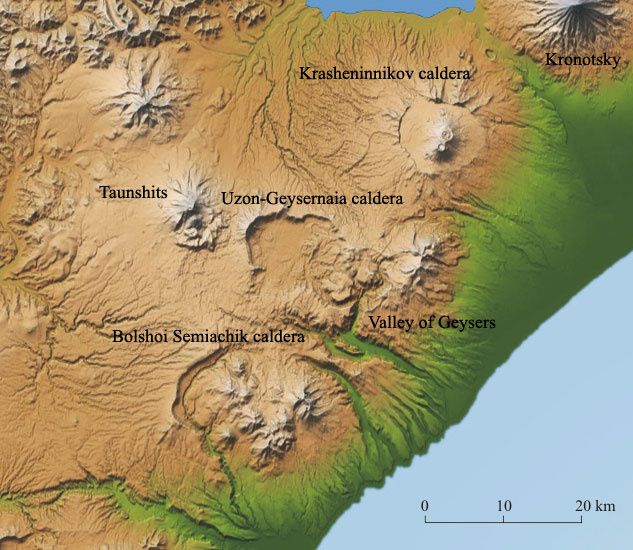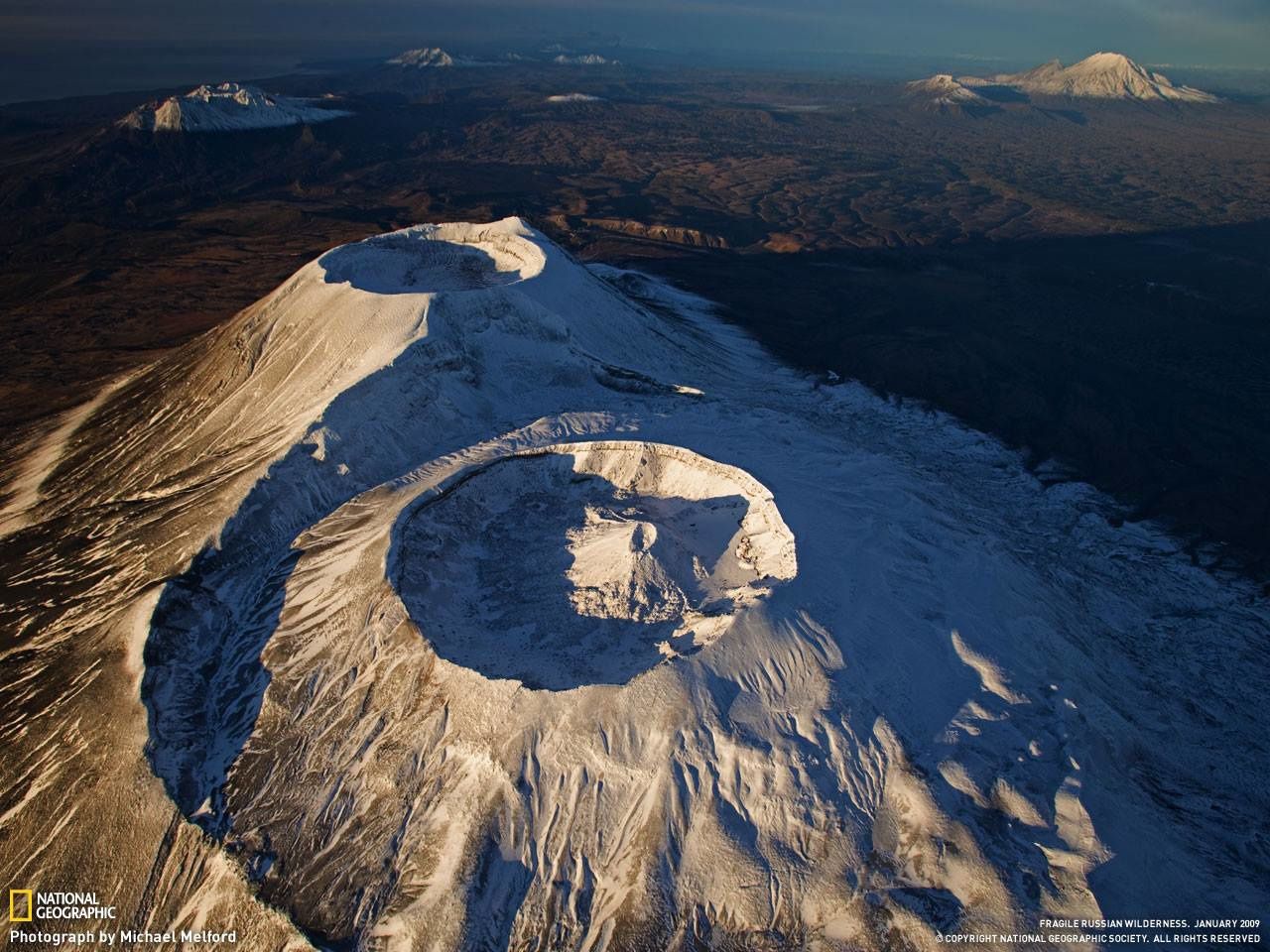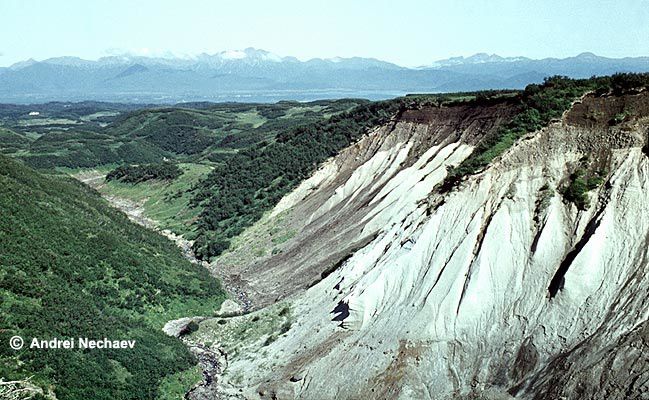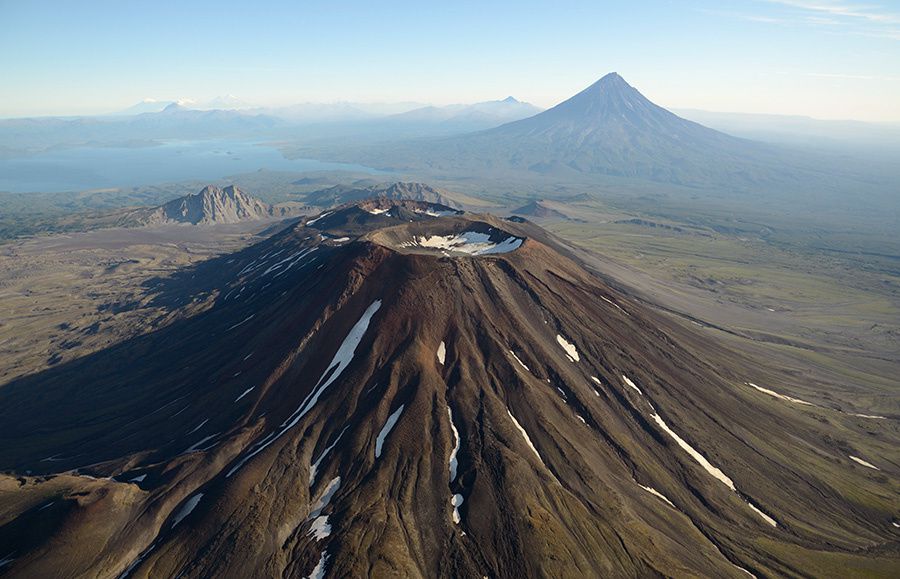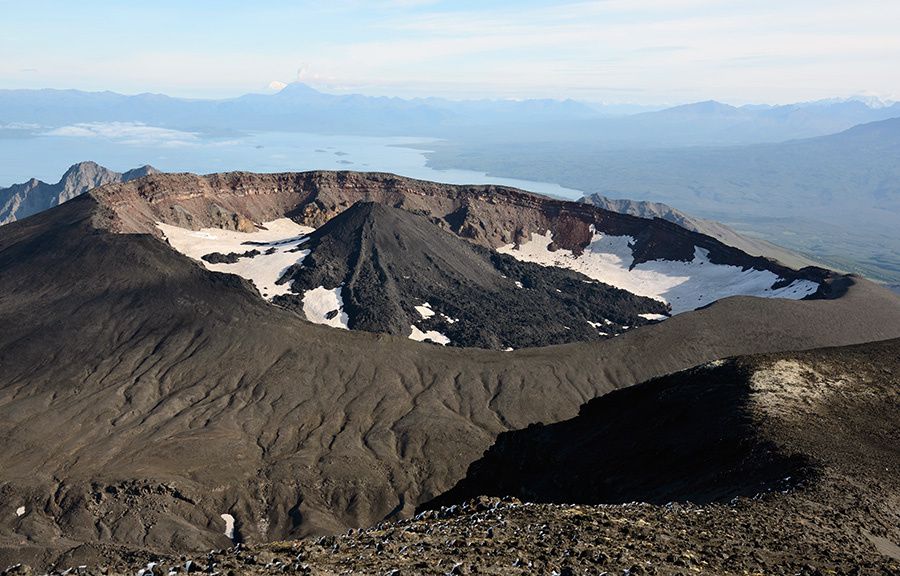Actualité volcanique, Articles de fond sur étude de volcan, tectonique, récits et photos de voyage
Par Bernard Duyck
Kronotsky Reserve : left, Kronotsky volcano , on the right Krasheninnikov . - Photo Vera Ponomareva / KSCNET
Somewhat forgotten among the stars of the Kronotsky reserve, the Krasheninnikov volcano is a hybrid consisting of two overlapping stratovolcanoes , and are built in a caldera of Pleistocene 9 of 11 km.
A series of dykes oriented north-south , parallel to the eastern volcanic field , in conjunction with an area of expansion in sub-surface , cut the edge of the caldera towards the Maly semiachik , crossing passing the caldera Uzon , and Bolshoi Semiachik . These dykes have fueled the monogenetic vents in the northern zone , extending over 15-20 km beyond the caldera.
Aerial views reveal its inner beauty, and two large craters 800 meters.
The summits of Krasheninnikov , with in the background, the volcano Kikhpinych - photo Michael Melford / National Geographic
White pumice tuff of the Pleistocene caldera (beyond the edge NW of Krasheninnikov ) is surmounted by glacial deposits (clear brown) and pyroclastic deposits and soil dated from Holocene (dark brown). - Photo Andrei Nechaev / KSCNET
The Southern Cone was built first, from 8050 BC ; its last eruption, to 5450 BC, was followed by a period of rest in the caldera of 900 years.
Then the activity has moved two kilometers further north, and the northern cone construction began on the slopes of the old cone to 4,450 BC, the magma having found an easier path through the newly formed dykes rather than using the old conduit.
Northern cone is topped by a caldera containing a small stratovolcano, whose crater contains a small cone ... in the manner of matryoshka . The last eruption of Krasheninnikov occured there are only 460 years , with the formation of small lava cone Paul in the North summit crater cone, and a lava flow from a vent located on the upper side southwest of the Southern Cone .
The Krasheninnikov , with in the background , the perfect silhouette of Kronotsky - photo E.Shpilenok / live newspaper
Southern cone of Krasheninnikov , containing the small cone Paul - photo E.Shpilenok / Wildlife Photo Russia
The volcano is named after Stepan Petrovich Krasheninnikov (1711-1755) , Russian explorer, naturalist and geographer, who made the first full description of Kamchatka in the early 18th century.
Sources :
- KSCNET - Kamchatka Holocene Volcanoes - link
- Global Volcanism Program - Krasheninnikov
Thème Magazine - Hébergé par Overblog


